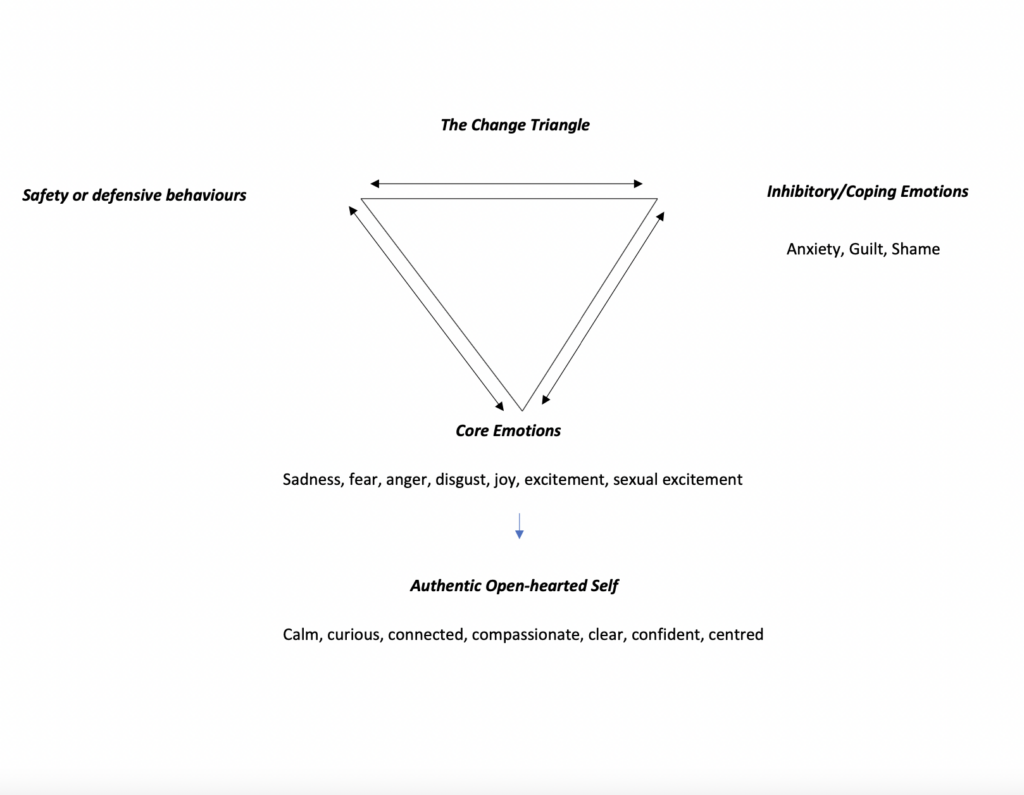As spring sets in in Squamish and the forest floor becomes alive with new green, I have been thinking about how change happens in counselling, particularly in working with emotional experience. The AEDP change triangle is a powerful tool that I use in my counseling practice to help individuals understand and work through emotions.
What is the AEDP change triangle?
The AEDP change triangle is a model created by Diana Fosha (PhD), a psychotherapist and founder of AEDP (Accelerated Experiential Dynamic Psychotherapy). It is a visual representation of the four fundamental components of emotional transformation:
-
- Defences: These are the protective behaviours that we use to cope with uncomfortable emotions (so that we don’t feel them). Defences can include things like denial, repression, rationalization, and avoidance.
- Inhibitory Emotions: These are “coping emotions,” like anxiety, shame and guilt that take over so that we do not experience core emotions.
- Core emotions: These are the primary emotions that are experienced in response to an event or situation. Core emotions are instinctive and universal, and include feelings of sadness, fear, anger, disgust, excitement, and sexual excitement.
- Authentic Open-Hearted Self: This is the core self that exists beyond our defences and inhibitory emotions. It is the part of us that is connected to our true feelings, desires, and values. The thinking in AEDP is that we need to feel our core emotions to tap into our core self and experiences of being calm, curious, connected, compassionate, confident, and centred.
How does the AEDP change triangle work?
The AEDP change triangle is based on the idea that emotional healing requires a shift in the way we experience and relate to our emotions. Rather than avoiding or suppressing our feelings, we must learn to be with them and integrate them to create lasting change.
The first step in this process is to become aware of our defenses and inhibitory emotions. What is stoping us from really feeling what we feel? This requires us to slow down and pay attention to the present moment. What is our body telling us right now- the churning of the belly, the tension in the chest, the way our mind bops around from thought to thought to though?
As we become more aware of our defenses and inhibitory emotions, we can start to challenge and release them. This involves first staying with our experience just as it is and better understanding the logic of where these coping strategies came from. Oftentimes, this is enough to drop into what is actually underneath- perhaps a sense of hurt, aloneness, or joy.
In this process we learn to develop ways to experience core emotions that feel safe. By doing so, we create space for our core self to emerge and flourish.
The AEDP change triangle was developed by Diana Fosha, and you can find more information about it in “It’s Not Always Depression,” a book by Hilary Jacobs Hendel.



